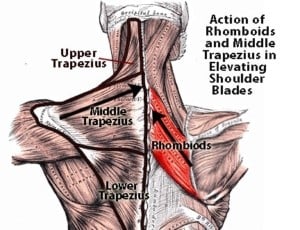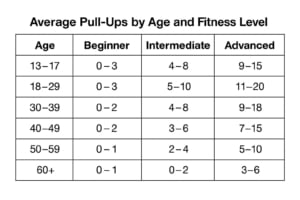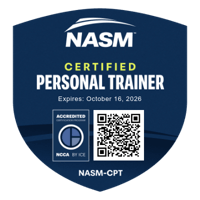What are the benefits of pull ups?
Pull ups are one of the best upper body strength training exercises, providing an effective way to build muscle and improve overall strength.
However, they’re one of the most challenging compound exercises to master.
After all, pull ups involve lifting your entire body weight using just your arms, and that’s quite a challenge – even if you are fit and athletic.
But, when you consider the benefits of pull ups, you’ll soon see that learning to do this great exercise will quickly start paying off.
Quick Links (Show/Hide)
The Top 10 Benefits of Pull ups
Pull ups provide a lot of bang for your workout buck.
The vast number of benefits means that pull ups deserve to be part of your workout routine.
Not sure yet?
Here are ten of the best reasons you should be doing pull ups:
#1. Build your latissimus dorsi
Pull ups are one of the best exercises for developing your latissimus dorsi and improving upper body strength.
They’re easily comparable to lat pulldowns, but pull ups are potentially better for increasing strength and muscle growth because you can expose your muscles to more weight.
You can make them even harder by strapping a weight around your waist and doing weighted pull-ups.
View this post on Instagram
#2. Strengthen your biceps
Even though pull ups are primarily a lat exercise, they’re also great for building bigger biceps.
If curls aren’t giving you the arm-building results you want, start working on your pull ups and chin-ups, and your guns will soon begin to grow.
#3. Increased grip strength
Supporting your entire body weight with your hands will build grip strength and develop your forearm muscles.
Because of this, pull ups are one of the most helpful deadlift assistance exercises.
A firm grip will stop you from dropping the barbell mid-rep.
Also, since pull ups (and barbell rows) strengthen your lats and grip, they will help you keep the bar close to your body during the deadlift, a vital component of excellent deadlift form.
Pulling strength is critical for success in the deadlift.
For this reason, powerlifters like Eddie Hall, Franco Columbu, and Konstantin Konstantinovs all recommend doing pull ups to excel in the deadlift.
#4. Decompress your spine
Hanging from an overhead bar takes the pressure off your spine.
Heavy squats and deadlifts compress your spine, and that can lead to back pain.
Pull ups and chin-ups, or even just hanging from a pull-up bar, stretch your back muscles and alleviate spinal pressure.
Do a set of pull ups between sets of squats and deadlifts to experience this decompressing effect for yourself.
#5. A good indicator of healthy body weight
The more overweight you are, the harder pull ups will be.
Losing weight is one of the best ways to make pull ups easier.
If you find pull ups hard, you might not be weak.
You might be too heavy.
Use this as inspiration to diet down and shed some unwanted fat.
Your pull-up numbers will soon improve!
#6. Healthier shoulders
When done with proper form, pull ups are an excellent compound exercise for shoulder joint and shoulder girdle health.
They involve and strengthen your middle and lower traps as well as your rhomboids, while also calling on the chest muscles as stabilizers for upper body control.
These postural muscles, whose position is across and below your shoulder blades, help stabilize your shoulder joint.
Stable shoulders are much less prone to injury.
Here’s a simple chest and shoulder workout variation you can try with pull ups:
Chest and Shoulder Workout with Pull Ups
#7. More powerful abs
Pull ups engage your core muscles to stabilize your lower body, providing an indirect but effective way to strengthen your abs.
You can make pull ups even more abs-centric by doing them with your knees raised or even with your legs extended in front of you, an exercise called L-pull ups.
#8. You can do pull ups almost anywhere
To do this exercise, all you need is somewhere convenient to hang.
Pull-up bars are ideal, but you can also do your workout using a tree branch, a roof joist, a climbing frame at the park, or anywhere else you can hang from your hands.
You can even do pull ups using a door.
#9. Increased functional strength
Because pull ups target multiple muscle groups, they help develop functional strength.
That means that they have a carryover to everyday life.
If you do pull ups several times a week, using a narrow or a wide grip, you’ll soon start to see the health benefits of pull ups, and many of the tasks you face will seem a lot easier too.
#10. Boosts mental toughness
Pull ups are not only a physical challenge but also a mental one.
The difficulty of lifting your entire body weight requires perseverance, focus, and mental resilience.
As you progress in pull ups, you’ll build not only strength but also confidence and discipline, which can translate to other areas of your life.
How To Do A Pullup (Step by Step)
To enjoy all the benefits of pull ups, you need to learn how to do them properly.
That way, you’ll get the most from this great exercise while keeping your risk of injury to a minimum.
Whether you’re working toward your first rep or can already do sets of 8, focus on strict pull-ups with good form for the best results.
Here’s how to do a proper pull-up:
#1. Hang from a bar
Use a slightly broader than shoulder-width pronated grip (overhand grip).
Your arms should be straight and your feet clear of the floor.
Bend your legs and cross your feet if required.
Pulling your shoulder blades down and back and, and without bending your arms yet, lift your chest towards the bar.
Brace your abs to stabilize your legs.
See ‘pulling your shoulder blades down’ at 2:27 in this video:
#2. Without kicking or swinging
Bend your arms and pull your body upward until your chin is just above the bar.
Think about leading with your elbows to increase lat activation.
#3. Maintain tension
As tempting as it is, don’t just relax and drop back down.
Instead, lower yourself slowly and under control.
#4. Don’t bounce out of the bottom
Without bouncing out of the dead hang, bend your arms, and repeat.
#5. Full range of motion
Remember to use a full range of motion when you do pull ups.
Go from full arms stretch to touching the bar with your chin.
Anything less than this will make your pull-up workout less productive.
#6. Chin Ups
You can also do this exercise with an underhand grip (aka supinated grip) turning pull ups into chin-ups.
Some people find chin-ups easier than pull ups because doing them with your palms facing you puts your biceps in a better pulling position.
Both exercises are similarly beneficial, so include either or both in your upper body pulling workouts.
Wonder if you should do chin-ups or pull ups?
See Chin-Ups vs. Pull-Ups – Which Is Better To Build Muscle for the answer!
#7. Neutral grip pull ups
For variety, try neutral grip pull ups, which are done with your palms facing each other.
Some exercisers find this hand position easier on the elbows than underhand chin-ups, which can put a lot of stress on your joints.
Exercises that will help you get your first pull-up
#8. There are lots of different pull ups you can do
Have you mastered regular pull ups?
Good for you!
There are plenty of other variations to try next, including:
What if you can’t do any pull ups?
Achieving your first pull-up is a significant achievement.
For some people, it comes easy, but others find it much harder.
Here are a few pull-up variations that will help you score your first pull-up and increase the number of pull ups you can do in a single set.
#1. Band-assisted pull ups
Using a resistance band makes pull-ups easier by temporarily reducing your body weight.
Loop a resistance band over your pull-up bar and kneel or stand in it.
Use a thinner resistance band to build pull-up strength until you can wean yourself off of elastic bands entirely and do your first unaided pull-up.
#2. Leg-assisted pull ups
No band?
No problem!
Lower your bar or stand on a step/box and use your legs to give your arms a boost.
See how little leg strength you need to use to do your reps.
Use your legs less and your arms more as you build muscle and get stronger.
#3. Negative pull ups
Because of the wonders of muscle physiology, you have more strength in the eccentric or lowering phase than you do in the concentric or lifting phase.
Make the most of this phenomenon by doing negative pull ups.
Stand on a box and climb into the top position of pull ups, with your chin over the bar.
Lift your legs and then slowly extend your arms and lower yourself down.
Climb back up and repeat.
In time, you’ll develop the strength you need to start your reps from the bottom.
#4. Isometric pull ups
For this developmental exercise, you aren’t going to do a single pull-up.
Instead, hold yourself with your arms bent so you are halfway up.
This isometric pull-up position will strengthen your muscles so that, in time, you’ll develop the power you need to do complete reps.
Increase the length of each hold until you can do 15-20 seconds.
You should then be ready to do a rep unaided.
#5. Grease the groove pull ups
Once you’ve done your first pull-up, you need to keep practicing to increase your performance.
One of the best ways to do this is known as greasing the groove.
In simple terms, GTG training involves doing lots of mini-workouts every day.
You never train too hard but, instead, do lots of easy sets.
For example, if you can do three pull ups, you would do many sets of just one rep, spread throughout your day.
Done daily, this will increase your pull-up ability without tiring you out.
Get better at pull ups fast by doing pull ups every day.
#6. Weighted pull ups
If you can do five or more pull ups, doing weighted pull ups will help you do more.
Strap on a weighted vest or weight belt and do sets with added resistance to strengthen your muscles.
Then, when you go back to just bodyweight-only pull ups training, you’ll have more strength, feel more comfortable performing, and be able to do more reps.
Three science-based tips to increase your pull ups from 0 to 10+ reps fast
↑ Back to Top
What Muscles Do Pull-Ups Work
Now that you’re on your way to mastering pull ups, it’s important to understand which muscles this powerful exercise targets.
Often called the king of upper body exercises, pull ups engage multiple muscle groups, helping to build your latissimus dorsi, upper back, and biceps, providing significant strength-building benefits.
Why It’s Important to Know Which Muscles Pull Ups Use
Understanding the muscles worked during pull ups, or any exercise for that matter, is essential for maximizing effectiveness and reducing the risk of injury.
By focusing on the right muscle groups, such as your lats, upper back, shoulder muscles, and biceps, you can improve your form, engage the correct muscles, and achieve better strength gains.
Additionally, knowing the role of supporting muscles like your core and shoulders ensures you’re engaging them properly, preventing muscle imbalances and promoting overall stability.
Pull ups target the following muscles:
#1. Latissimus dorsi
Known as your lats for short, this is a large and powerful muscle located on the sides and across your upper back.
When well-developed, it gives your torso a pronounced V-shape.
Big lats look like wings.
The latissimus dorsi muscle is the prime mover muscle (sometimes called the agonist) in the pull-up exercise, which means that the lats provide the primary force driving the pull-up action.
If you want to build a broad V-shape physique, you want to do pull ups!

#2. Biceps brachii
The muscles on the front of your upper arms, and known as biceps for short, this muscle flexes your elbow.
Your biceps are the primary synergist muscle in the pull-up movement and assist your lats in performing a pull-up.
For this reason, pull ups will also help you build bigger biceps in addition to your lats.

#3. Mid-traps and rhomboids
You can find your mid-traps and rhomboids between your shoulder blades as in the image below; these muscles work together to pull your shoulders back.

#4. Lower traps
You can find your lower traps below your shoulder blades; the lower traps hold your shoulders down so that they do not fly up and hit your ears during pull ups!
#5. Rectus abdominus
The rectus abdominus muscle is known as Your abs for short; this muscle, whose location is on the front of your abdomen, is a stabilizer muscle in the pull-up and works to keep your lower body stable and stationary during pull ups.

FAQs
Can the average American man do a pull up?
Most studies show that fewer than 40% of American adults can do a single strict pull up.¹
Extra bodyweight, lack of training, and weak grip strength are the main reasons.
For those who can, data shows that the average untrained man can usually manage 1–3 strict pull ups.
Fit men may do 8–12, while highly trained athletes often exceed 15–20 reps.
How many pull ups should a 13-year-old be able to do?
According to youth fitness standards, the average 13-year-old boy can usually complete 3–5 pull ups, while girls may still be developing the upper-body strength to do one. ²
Consistent practice helps improve quickly.
Why can’t I do a pull up?
Common reasons include excess bodyweight, weak pulling muscles, and limited grip strength.
Start with assisted pull ups, negatives, or band-supported variations to build toward your first rep.
Is a chest and shoulder workout the same as pull ups?
No.
Pull ups mainly work the back and biceps, while chest and shoulder workouts focus on pushing muscles (pecs, delts, triceps).
Both are useful for balanced strength.
How many pull ups should I be able to do?
Here’s a chart showing general standards by age and fitness level for men. (Women typically perform about half as many reps at each fitness level.)
These are rough guidelines, not strict rules, based on data from Everyday Health ¹, and ExRx Youth Pull-Up Standards ².
The Incredible Benefits of Pull Ups – Wrapping Up
Whatever your fitness goals, pull ups will help get you there faster. ³
They are a great way to improve your upper-body strength and overall functional strength, making them one of the most effective compound exercises you can do.
They’re a classic time-efficient upper body exercise that works for almost every muscle group in your torso.
Pair them with push-ups, and you have an incredibly effective upper body strength workout with just two moves!
Pull ups aren’t easy, though, and that’s why a lot of exercisers don’t do them or even try them.
But, once mastered, the mighty pull-up is one of the most effective exercises you can do.
So, train hard, be patient, and work on your pull ups.
You’ll soon be cranking them out in sets of 15 reps, and your arms and back will look amazing!
Improve Your Pull-Up | 3 Easy Tips
What’s Next
Looking to switch things up and challenge your upper body even more?
Try incorporating neutral grip pull ups into your routine.
They provide a great balance between traditional pull ups and chin-ups while being easier on your elbows.
Discover the key muscles worked and the top benefits of this effective pull-up variation in this comprehensive guide:
Related Posts:
- Powerlifters Eddie Hall, Franco Columbu, and Konstantin Konstantinovs all recommend doing pull ups to excel in the deadlift.
- The Top 10 Calisthenics Exercises + Workout Plan for Beginners
- 12 Best Deadlift Accessory Exercises to Fix Your Deadlifts
- Losing weight is one of the best ways to make pull ups easier.
- 10 Best Pull-Up Bar Exercises for Abs + Core Muscles Workout.
- 7 Best Pull-up Alternative Exercises for Beginners at Home
- 9 Best Vertical Pull Exercises at Home + Strong Back Workout
- 7 Best Grip Strength Exercises: Benefits + Training Workout
Footnotes:
¹ How Many Pull Ups Can the Average Man Do? – Everyday Health
² Youth Fitness Testing Norms (Pull Ups) – ExRx
³ Top Benefits of Pull Ups – Healthline

